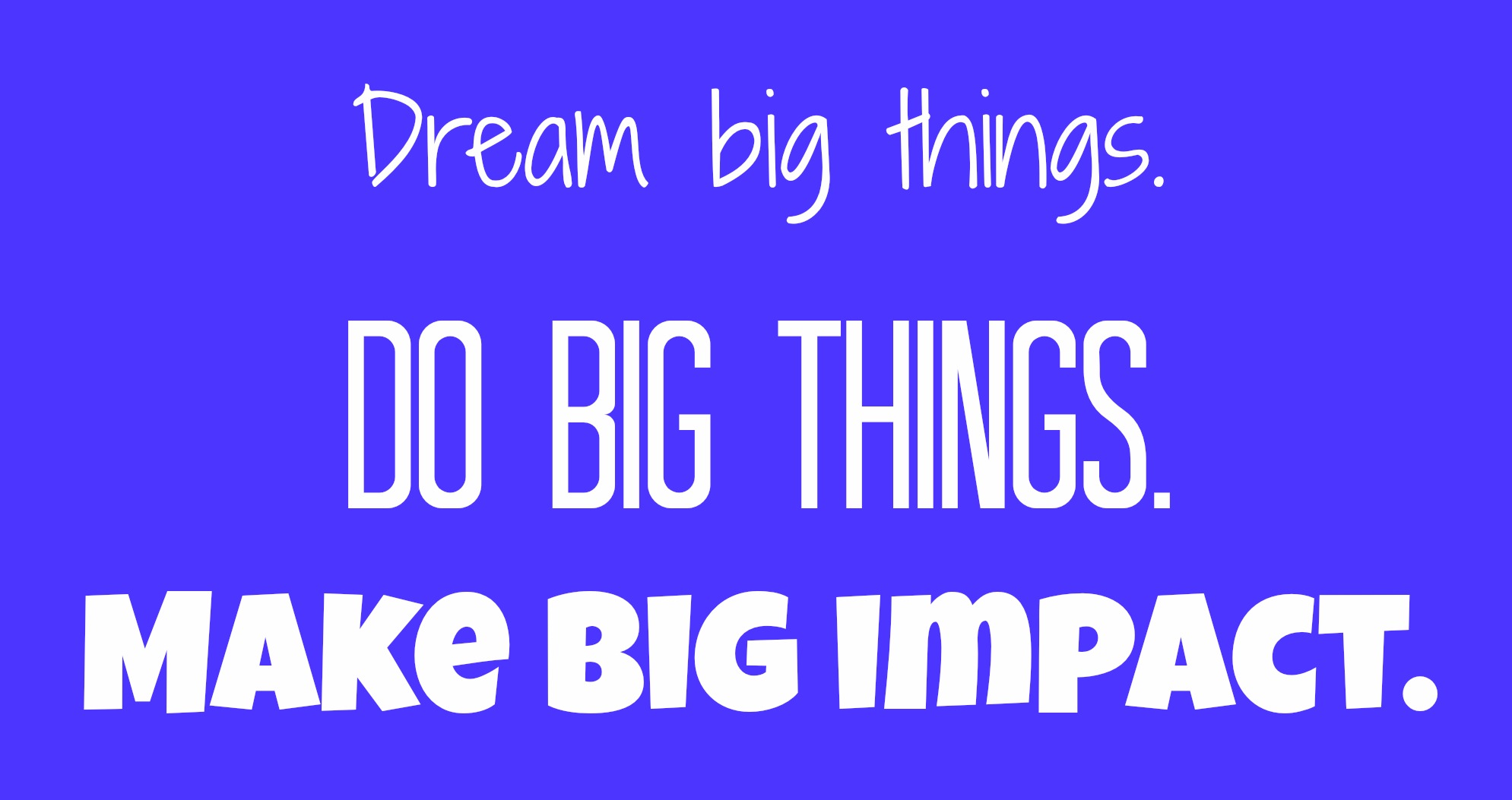Make 2018 Your Year to Do Big Things
But this is also a great time to reflect and survey the months ahead. What do you want to do with them? If this is your year to do big things, your goals might include improving your health, acquiring a new skill or habit, or even writing a book or starting that winning blog. But as many of us know, making a resolution to change is one thing. Making those changes stick is another.
Research has shown that we abandon one-third of all new year’s resolutions within the first month, and fewer than half survive to the six-month mark. Can we do better than that? Of course. Here’s how.
According to experts in psychology and productivity, there are three keys to making resolutions that stick:
- Be smarter about how you make resolutions. Choose the right goals for the right reasons.
- Implement new behaviors in ways that make it likely you’ll turn them into habits.
- Plan how you’ll find the willpower and support to stay motivated and on track.
Step 1: Get SMART
Let’s start with the resolutions themselves.
It’s not enough to have a good idea. Your idea also has to be actionable and attainable.
Sociologist Christine Whelan described a well-crafted resolution as “SMART”—it’s specific, measurable, and achievable, there’s a reward for sticking with it, and we can track our progress throughout the year.
Just as importantly, you have to want it. As entertainer Chris Hardwick said in a recent Evernote podcast, “Emotion is what drives motivation. Until you’re emotionally motivated, you’re probably not going to commit to doing something because everything takes work.” Whether you’re trying to lose weight or write a novel, you’re more likely to stick with difficult projects when the motivation comes from within.
Step 2: Get in the habit
Another reason resolutions fall apart is that we try to take on too much at once. Going after too many difficult goals at the same time can leave you burned out. To maximize your chances of success, choose just one resolution. Start with the easiest one. You wouldn’t try to run a marathon if you’ve never run a mile, would you? The same applies to willpower and self-control.
The idea is to focus, not on the goal, but on the habits that get you there. To do big things, you have to start with tiny ones, so start small and work your way up. Productivity expert Tiago Forte suggests treating your habits like experiments, where you are in control. “Know what it is you want to change,” he says. “Choose a behavior that you think will work. You have to think of small things that make the habit you want to develop more interesting.” He suggests making small changes into a game to challenge yourself, such as seeing how many different, positive ways you can find to change the habit.
Try fitting your new habit into the daily routines you already have. Routines run on autopilot and resist big changes, but they’re easy to hack from within once you understand how they work.
Habitual behavior begins with a trigger or cue and results in a psychological reward. For example:
- At 3:00, I take a coffee break in the office. The coffee tastes good and makes me feel alert.
- 3:00 is the cue
- The coffee break is the behavior, and
- Feeling alert is the reward.
If you can insert a new behavior into this cycle, leaving the cue and the reward intact, your brain should adapt more easily, especially if you’ve kept the task small:
- At 3:00, I walk to the coffee bar on Broadway. The coffee tastes good and makes me more alert, I get a little exercise, and the fresh air clears my head.
You don’t need any particular motivation to make the change because you’re already doing pretty much the same thing. And that makes it easy to gradually ramp up to your objective:
- At 3:00, I go for a brisk power-walk. It gives me some exercise, clears my head, reduces stress, and makes me more alert.
The cue hasn’t changed. The rewards are similar but greater. But the behavior has completely changed.
Of course, this doesn’t happen overnight. It may take a long time to get where you want to go. But as long as each step is headed in the right direction, you’ll get there.
Step 3: Stay motivated with Evernote
Wonder how you can to keep the cycle going? It’s pretty easy to slip into the old ways if you aren’t making sure you’re accountable to yourself. Here’s where Evernote can help. Create a Personal Development notebook in Evernote where you can keep it all together.
Here’s some of what goes in your Personal Development notebook:
- Calendars
- Checklists and reminders
- An inspiration archive
Calendar
Calendars are simple yet powerful motivational tools. When you successfully achieve your daily goal, mark your calendar. That’s it. Comedian Jerry Seinfeld famously used this method when building his career, making sure he wrote new material every day. Seeing a string of marked days on a calendar is a great way to build confidence and a sense of accomplishment. It also provides gentle pressure: you’ll go out of your way to make sure you “don’t break the chain.”
Checklists and reminders
Need a little push? Build checklists and reminders into Evernote to remind you to keep working on your new habits. Good checklists might include your gym routines, that list of how many vegetables you’re supposed to eat every day, or tracking how many words you wrote each week. Tracking your progress in Evernote not only makes you accountable to yourself, but it’s fun to be able to notice yourself as you change your habits.
Inspiration archive
Found an article or image online that motivates you? Use Web Clipper to capture it in Evernote. Build a vision board that you can turn to when you feel the urge to slip.
If you use IFTTT or Zapier to connect Evernote with other apps, there are recipes available for capturing favorite tweets or other social media updates, recording your progress, and automating many other tasks.
Story posted originally on Evernote.com


